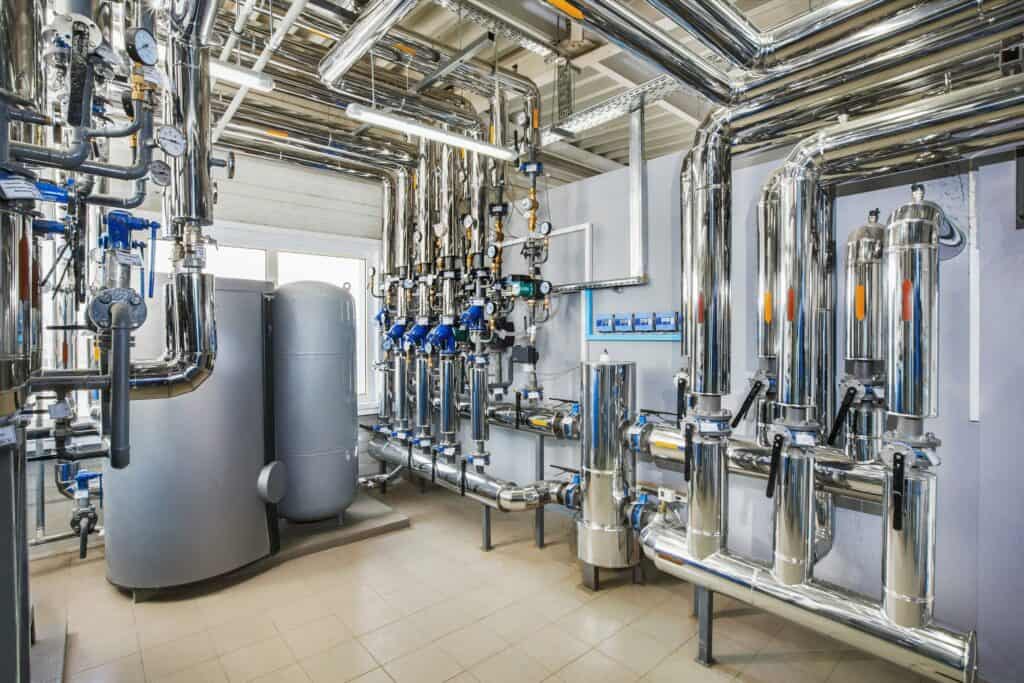Boiler feed pumps are the most efficient way to feed specific quantities of water into a steam generator. Boiler systems are used in many different industries. Incorporating a boiler feed pump (BFP) will provide more consistent and accurate feedwater results. If you are interested in learning more about the basics of boiler feed pumps, here are seven things you should know:
- Types of Boiler Feed Pumps
There are various pump types that can be used for boiler feed systems. However, most of today’s boiler feed pumps are centrifugal pumps. Centrifugal designs generally offer the most efficient performance in standard boiler feed applications. Many manufacturers produce BFPs tailored to the unique specifications required for modern boiler systems. The most common pump types for BFPs are multi-stage barrel pumps (best for high-pressure applications) and ring section multi-stage pumps.
- Boiler Feed Pump Materials
Most boiler feed pumps were constructed of unalloyed steels up until the late 1950s. This limited potential discharge pressure and flow rates. Over time, manufacturers have evolved their designs to incorporate more effective materials. Many use chrome steel for added durability and corrosion resistance. Performance standards have risen throughout the decades, and today’s BFPs are built to stand up to the most demanding boiler feed applications.
- Boiler Feed Pump Motors
Electric (asynchronous) motors are generally used to power boiler feed pumps. This allows for precise speed controls and faster adjustments during operation. Higher levels of control can be achieved with a variable frequency drive (VFD) system. A condensate-type steam turbine can also be utilized in certain boiler feed configurations.
- Boiler Feed Pump Casings
The wall thickness of BFP casings is very important to understand for proper pump selection. One side must have a wall thickness that will satisfy the pressure-loading requirement of the application. At the same time, the other side of the casing must be adaptable to variable temperatures that can occur during the boiler feed process.
- Axial Thrust & Radial Forces
Impellers are arranged on a long shaft in multi-stage boiler feed pumps. This produces axial thrust, which must be balanced for efficient operation. The same can be said for the radial forces arising from the weight of the rotor. Any mechanics that are out of balance while the pump is running can cause serious problems. A BFP requires precision alignment and proper maintenance to provide the best long-term performance.
- Boiler Feed Pump Seals
There are various sealing solutions used for boiler feed pumps, including mechanical seals, stuffing boxes, labyrinth seals and floating seals. Different seals are more effective depending on the BFP and its application.
- Thermal Shock & Minimal Flow
One significant concern with BFPs is thermal shock. This can occur if the pump is switched on and off frequently. Warming-up pressure is important to factor in if you want to avoid thermal shock and damage to the casing itself. Most boiler feed systems will also feature a minimum flow valve (or automatic leak-off valve). It is placed downstream to ensure that a minimum flow is always happening. This is another way to help prevent equipment damage.
To learn more about boiler feed pumps and for help with selecting the best pumps from leading BFP manufacturers like Sundyne and Grundfos, contact DXP Pacific today.

